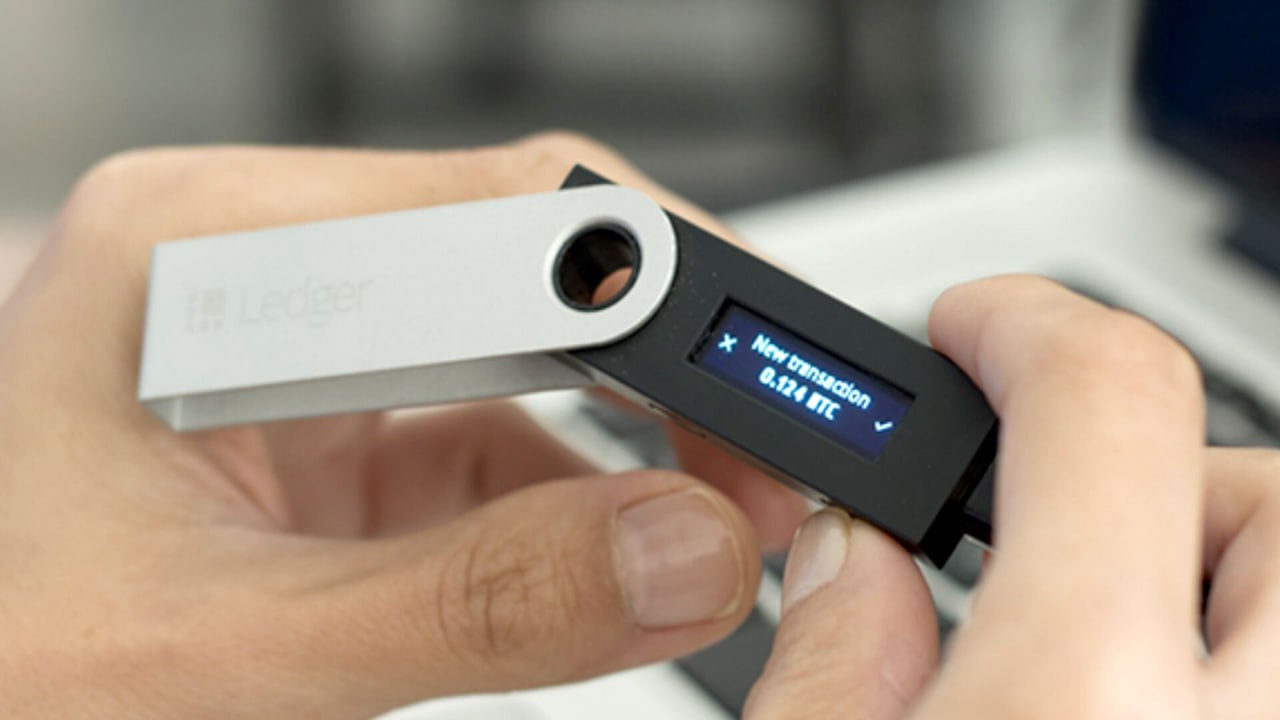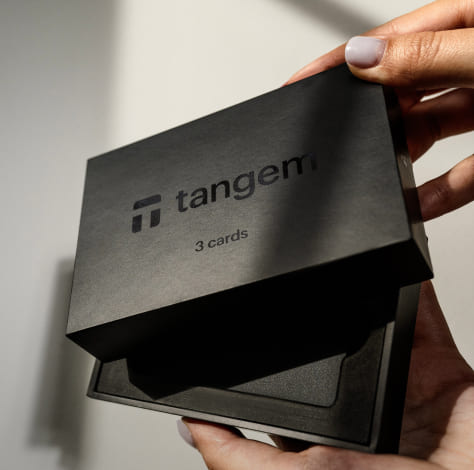
Coldstorage solutions are imperative for your business’s digital asset security. In the landscape of cryptocurrencies, enterprise hardware wallets offer robust protection against cyber threats and unauthorized access. This comparison evaluates top-tier wallets, emphasizing their security features, user-friendliness, and support for multiple currencies. By understanding the differences among these wallets, you can make an informed choice that safeguards your valuable digital assets effectively.
Key Takeaways:
- Enterprise hardware wallets provide advanced security features, such as multi-signature support and hardware isolation, tailored for business needs.
- Comparison includes various factors like ease of use, integration capabilities, and support for multiple cryptocurrencies.
- Cost-effectiveness must be evaluated alongside security and functionality for optimal asset protection in a business setting.
The Paradigm Shift: Why Businesses are Transitioning to Cold Storage
The shift towards cold storage solutions is primarily driven by escalating concerns over cybersecurity threats. High-profile breaches and hacks have revealed the vulnerabilities of hot wallets, leading many businesses to reevaluate their asset protection strategies. In 2021 alone, cryptocurrency exchanges reported losses exceeding $1 billion due to security breaches, highlighting the urgent need for more robust safeguarding methods. As you consider your operational framework, prioritizing cold storage allows your business to mitigate these risks effectively and safeguard your digital assets.
Additionally, regulatory pressures are influencing the adoption of cold storage. Many jurisdictions are tightening regulations surrounding digital asset management, demanding stricter compliance measures. Transitioning to cold storage not only enhances security but also positions your business as a compliant entity in a rapidly evolving landscape. By choosing this method, you align with best practices that bolster your reputation and instill confidence among stakeholders.
Current Threat Landscape: Cybersecurity Breaches in Cryptocurrency
Recent years have been marked by a surge in cybersecurity breaches targeting cryptocurrency entities, underscoring the fragility of digital assets held in hot wallets. The infamous Coincheck hack in 2018, where approximately $530 million was stolen, and the 2020 KuCoin breach, where hackers made off with over $275 million, serve as stark reminders of the risks involved. As you assess your own vulnerability, acknowledging that over 90% of stolen cryptocurrencies were taken from exchanges highlights the need for more secure storage options.
Moreover, the rise of sophisticated cybercrime tactics, such as phishing, ransomware, and social engineering, further exacerbates the threat landscape. Attackers are increasingly targeting employees within organizations to gain access to private keys and sensitive information. A statistic from the Cybersecurity and Infrastructure Security Agency (CISA) indicates that roughly 70% of organizations experienced some form of cyber threat in their operations in 2022. Identifying these vulnerabilities is key in deciding the best defensive strategies.
The Value Proposition: Cold Storage vs. Hot Wallets
Cold storage offers a significant advantage over hot wallets by eliminating exposure to online threats. While hot wallets provide convenience for frequent transactions, their constant connection to the internet makes them prime targets for cybercriminals. In contrast, cold storage wallets remain offline, dramatically reducing the risk of unauthorized access. The additional layers of security, such as hardware isolation and multi-signature requirements, provide unmatched protection for your business assets.
When considering operational efficiency versus security, cold storage’s upfront complexity becomes balanced by its long-term safety benefits. While hot wallets might appeal due to their accessibility and user-friendly nature, the lasting peace of mind afforded by cold storage cannot be overstated. Cold wallets enable you to manage your digital assets without the incessant worry of hacks or breaches, aligning tightly with sound risk management practices and enhancing your overall security posture.
The Titans of Hardware Wallets: A Comparative Analysis
Comparative Overview of Major Hardware Wallet Providers
| Provider | Key Features |
|---|---|
| Ledger | Multi-currency support, Secure Element technology, extensive ecosystem |
| TrezorSome of the links on this page are affiliate links. If you purchase a cold wallet through these links, we may earn a commission at no extra cost to you. | User-friendly interface, open-source firmware, strong community support |
| BitBoxSome of the links on this page are affiliate links. If you purchase a cold wallet through these links, we may earn a commission at no extra cost to you. | Compact design, microSD backup, focus on simplicity |
| KeepKey | Large display, mobile compatibility, integration with ShapeShift |
Key Players: An In-Depth Look at Leading Providers
Ledger stands out with its multi-currency support and the use of Secure Element technology, making it a top choice for businesses that handle diverse cryptocurrencies. The integration options within its ecosystem facilitate smooth transactions and account management. Trezor, alternatively, emphasizes a more user-friendly interface, providing an intuitive experience that caters to both novices and seasoned users. The open-source nature of its firmware allows for regular updates and community-driven improvements.
BitBoxSome of the links on this page are affiliate links. If you purchase a cold wallet through these links, we may earn a commission at no extra cost to you. appeals to users seeking a compact design while ensuring robust functionality through its microSD backup feature. This wallet’s streamlined approach makes it an excellent fit for business users focused on simplicity. KeepKey distinguishes itself with a large display that enhances usability during transactions, along with mobile compatibility that meets the demands of the on-the-go enterprise professional. Each provider offers unique attributes that cater to varying business needs, emphasizing the importance of aligning wallet choice with specific operational requirements.
Performance Metrics: Security, Usability, and Compatibility
Examining performance metrics reveals profound differences in security, usability, and compatibility. Security features are paramount, with hardware wallets like Ledger and Trezor utilizing advanced cryptographic techniques to protect your keys from unauthorized access. On the usability front, Trezor’s straightforward interface often leads to quicker onboarding, making it less daunting to new users. Compatibility with various platforms is another consideration, as some wallets operate seamlessly across different operating systems and devices, enhancing your ability to access and manage assets anywhere.
The emphasis on performance metrics must align with your business’s security strategies. Security requirements can dictate wallet choice, especially in environments handling significant volumes of cryptocurrency. Enhanced usability often leads to higher adoption rates among your team, ensuring that your chosen hardware wallet fits well within your operational flow. Compatibility across multiple devices and systems ensures that you can manage your assets effectively while safeguarding against potential vulnerabilities.
Security Protocols That Matter: What Sets Business-Grade Apart
Encryption and Backup Features: Ensuring Asset Integrity
Your enterprise hardware wallet’s encryption protocols play a vital role in safeguarding critical data. Most business-grade wallets employ advanced encryption standards, such as AES-256, to protect private keys and transaction data. This level of encryption not only safeguards against unauthorized access but also ensures that any data breaches do not compromise the integrity of your digital assets. Additionally, robust backup features, including recovery seed phrases and hardware redundancy, allow you to restore access to your assets in case of device failure or loss; the best solutions offer automated backup options to streamline this process efficiently.
Evaluate wallets that utilize secure enclaves, which provide an isolated environment for key storage. This additional layer of protection against physical and remote tampering ensures that your assets remain secure even under potential attack scenarios. Regular firmware updates and security patches are also indicative of a reliable wallet, as these measures maintain compliance with emerging threats and vulnerabilities in the evolving landscape of cybercrime.
Multi-Signature vs. Single-Signature Wallets: Evaluating Risk Management
Multi-signature wallets offer a distinct advantage in risk management through the distributed nature of access control. By requiring multiple signatures from different private keys before a transaction can be executed, you reduce the likelihood of unauthorized transactions. This setup enhances security immensely, especially for organizations handling substantial digital asset portfolios, allowing for shared responsibility among key stakeholders and improving accountability in financial transactions. Certain multi-signature solutions support integration with governance structures, enabling you to set varying permissions based on user roles within the organization.
On the other hand, single-signature wallets may present a higher risk profile due to their dependence on a single point of access. Although they may offer simplicity and speed for transactions, the potential for loss or compromise dramatically increases. If that key is lost or stolen, access to the wallet—along with all stored assets—vanishes. Evaluating these factors helps you make informed decisions based on your organization’s specific security needs and operational requirements.
Extensively utilized in corporate environments, multi-signature wallets not only improve security but also foster a collaborative approach to asset management. Organizations can customize the percentage of required signatures according to their needs, allowing for a flexible response to internal protocols while ensuring that a cohesive consensus is reached before executing any significant transactions. This collaborative security mechanism contrasts with the simplicity of single-signature wallets, where the propensity for human error or malicious action is disproportionately higher, necessitating a robust evaluation of your organizational threat landscape.
Regulatory Compliance in Cold Storage Solutions
Navigating Legal Frameworks: GDPR, CCPA, and Cryptocurrency Regulations
Understanding the legal landscape surrounding cryptocurrency storage is imperative for your business compliance strategy. The General Data Protection Regulation (GDPR) sets strict guidelines for data protection and privacy in the EU, which can extend to how you manage personal data within your wallet solution. Similarly, the California Consumer Privacy Act (CCPA) imposes obligations on businesses handling the personal information of California residents. Adapting your cold storage solutions to comply with both regulations means ensuring that any personal data accessed or processed by your enterprise hardware wallet aligns with these legal requirements.
Beyond GDPR and CCPA, staying informed about evolving cryptocurrency regulations is paramount. Countries and regions are creating specific laws governing digital assets, including Anti-Money Laundering (AML) and Know Your Customer (KYC) requirements. Failing to adhere to these regulations can result in substantial penalties and reputational damage. Thus, your compliance efforts should encompass an understanding of local and international regulations that may impact your storage protocols.
Best Practices for Compliance: Protecting Business Interests
Implementing best practices for regulatory compliance not only protects your business interests but also fosters trust among your stakeholders. Begin with a thorough data inventory, mapping where and how personal and sensitive data is stored within your cold storage solutions. Establish robust internal policies that outline data handling, user access controls, and employee training programs focused on data privacy. Engaging with legal advisors or compliance experts ensures that your practices remain compliant as the regulatory landscape evolves.
Regular audits of your cold storage solutions can uncover vulnerabilities or non-compliance issues, allowing you to address them proactively. Utilize tools that integrate compliance checks within your storage systems, ensuring you adhere to changing regulations without disrupting operations. Developing a culture that prioritizes compliance, coupled with transparent reporting practices, can mitigate risks while safeguarding your corporate reputation.
Costs of Ownership: What to Expect from Hardware Wallets
Initial Investment vs. Long-Term Security Benefits
The initial investment for enterprise hardware wallets can range from $100 to several thousands of dollars, depending on the features, brand, and capacity of the device. While this may seem steep, the long-term security benefits significantly outweigh the upfront costs. Choosing a robust hardware wallet often means implementing advanced encryption, secure chip technology, and multi-signature capabilities that all contribute to safeguarding your assets. Over time, the potential losses from breaches or theft without such protection could far exceed the initial costs incurred.
Your strategy must include not only the price tag but also the operational efficiency gained through using these devices. Enhanced security reduces risk and fosters trust in your business operations, improving your overall investment by allowing you to focus resources on growth rather than constant risk mitigation. Corporate clients have reported savings that result from preventing security incidents, with some estimating losses averted can reach upwards of millions due to effective cold storage solutions.
Hidden Costs: Maintenance, Insurance, and Updates
Owning enterprise hardware wallets involves more than just the purchase price. You should factor in maintenance, insurance, and periodic updates, which can sneak in additional expenses. Regular maintenance includes ensuring that the devices are up-to-date with the latest firmware, addressing any potential vulnerabilities. Neglecting updates could expose your assets to hackers who exploit outdated security features. Moreover, insurance policies specifically for cryptocurrency assets can add an extra layer of safety, albeit at an additional annual cost.
The cost of maintenance and insurance should also be anticipated in your budgeting process. For instance, insurance providers might charge a premium based on the value of your assets and the technological sophistication of your storage methods. Additionally, some wallets require ongoing subscriptions for enhanced features such as extended customer support or advanced analytics, which further adds to the total cost of ownership.
In hidden costs, understanding the full spectrum of ongoing expenses is necessary. Maintenance tasks may require skilled personnel who understand the intricacies of cryptocurrency security, thereby introducing labor costs. Staying informed about regulatory changes could also lead to additional compliance-related expenditures. Balancing these hidden costs against your operational budget ensures that your cold storage solution remains sustainable and effective.
Final Words
On the whole, understanding the landscape of enterprise hardware wallets is important for securing your digital assets in a business environment. As you compare various business-grade cold storage options, consider factors such as security features, ease of use, and compatibility with your existing systems. Each solution presents its own strengths and weaknesses, and aligning these with your organization’s specific needs will maximize the effectiveness of your cold storage strategy.
Ultimately, making an informed choice in your enterprise hardware wallet can safeguard your assets and bolster your security posture. Take the time to evaluate the various options available and select a solution that not only meets your current requirements but also has the potential to adapt and grow with your business in the evolving landscape of digital currencies.
FAQ
Q: What are enterprise hardware wallets and how do they differ from standard wallets?
A: Enterprise hardware wallets are specialized devices designed for businesses to securely store digital assets. Unlike standard wallets, they offer enhanced security features, multi-user support, and compliance with regulations to protect corporate funds.
Q: What security features should I consider when choosing an enterprise hardware wallet?
A: Key security features include multi-signature support, strong encryption, tamper-proof design, secure element chips, and frequent firmware updates. It’s also important to evaluate user access control and recovery processes.
Q: How do enterprise hardware wallets ensure the safety of my business’s digital assets?
A: They store private keys offline, providing a significant layer of protection against cyber threats. Many enterprise wallets also implement advanced cryptographic techniques and offer backup and recovery solutions to safeguard against data loss.







